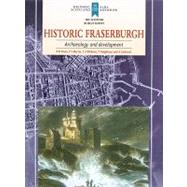- ISBN: 9781902771793 | 1902771796
- Cover: Paperback
- Copyright: 10/31/2010
This survey gives an accessible and broad-ranging synthesis of the history and archaeology of Fraserburgh, and aims to inform conservation guidance for future development. Situated on an exposed headland on the north-east coast of Scotland, the historic burgh of Fraserburgh, dating from the late sixteenth century, is the earliest of Scotland's 'new towns'. It was unique for the time in being laid out on a grid, unlike other new towns of the period such as neighbouring Peterhead. The town's origins lie in the medieval settlements of Faithlie and Broadsea down by the shore, but it takes its name from the landowner: it was Fraser's broch (burgh). The new town was laid out on top of a headland, with the principal thoroughfare, Broad Street, tightly closed at each end to shelter from the wind. Like other settlements on the north-east coast, the town's main economic activity was fishing, and over the centuries large sums were spent on building and improving the harbour facilities. For much of the nineteenth and early twentieth century it vied with Peterhead as the busiest herring port in Scotland. The commercial centre remained at the shore until the nineteenth century when banks and offices moved up the hill. Fraser had grand ambitions for his 'broch': towards the end of the sixteenth century he established a short-lived university in the town. The town's strategic location and Episcopalian/Jacobite tendency meant that it was almost permanently garrisoned in the seventeenth and eighteenth centuries. The town developed rapidly in the early to mid-nineteenth century, with even baths and a mineral well. The book examines Fraserburgh's historic development from the late medieval period to its heyday as a major herring port. The town has received very little archaeological investigation and so the authors consider where the areas of archaeological potential lie, in order to inform the future management of Fraserburgh's historic environment.







